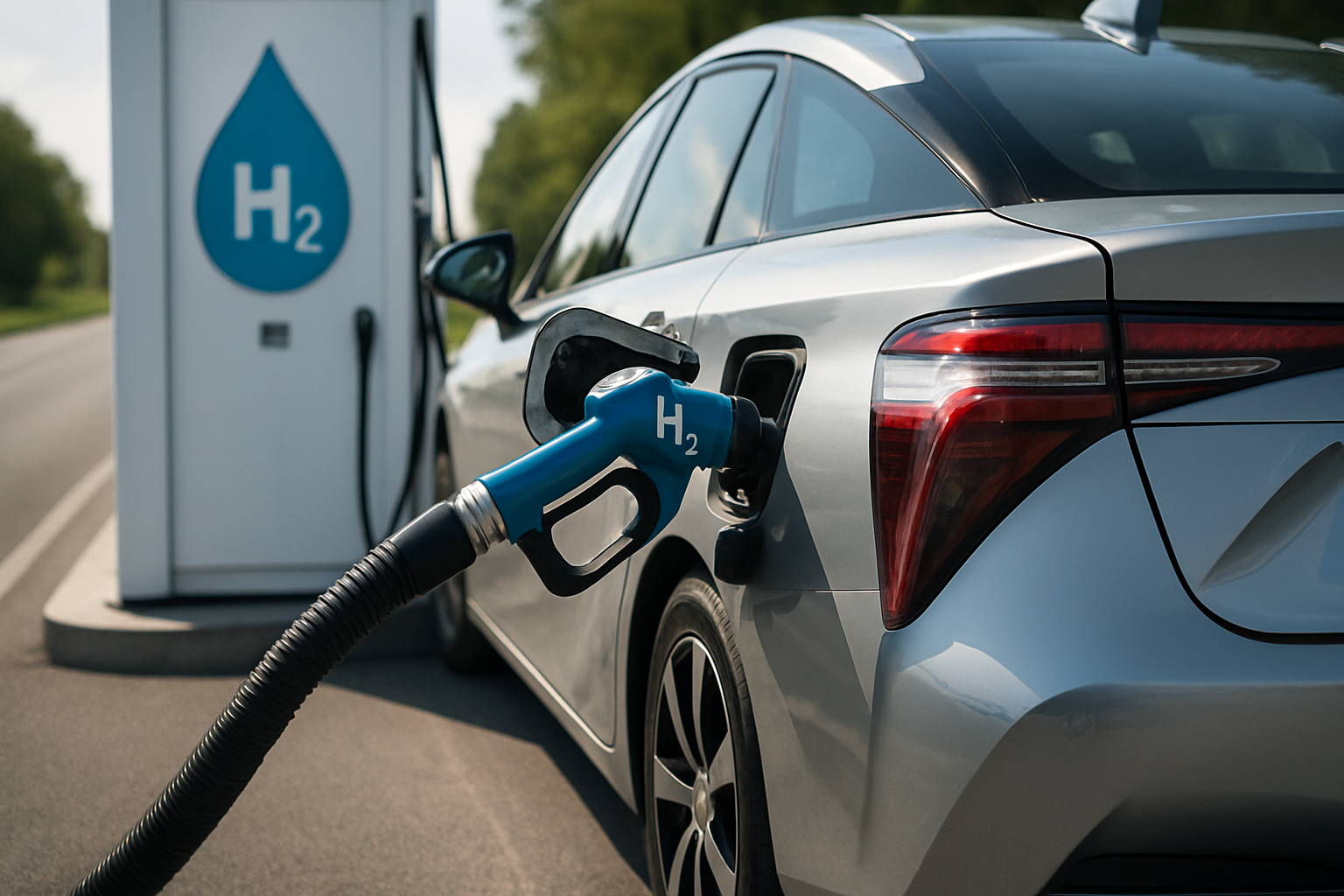Hydrogen Fuel Cell Vehicles: The Next Frontier in Clean Mobility
In a world increasingly focused on sustainable transportation, hydrogen fuel cell vehicles (FCVs) are emerging as a promising alternative to traditional combustion engines. This cutting-edge technology harnesses the power of hydrogen to produce electricity, offering zero-emission driving without the range limitations often associated with battery electric vehicles. As automakers and governments alike invest in hydrogen infrastructure, FCVs are poised to revolutionize the automotive landscape.

The Science Behind Hydrogen Fuel Cells
At the heart of every hydrogen fuel cell vehicle lies a complex system that converts hydrogen gas into electricity. This process, known as electrolysis, occurs within a fuel cell stack composed of hundreds of individual cells. Each cell contains an anode, a cathode, and an electrolyte membrane. When hydrogen is fed into the anode, it splits into protons and electrons. The protons pass through the membrane to the cathode, while the electrons are forced to travel through an external circuit, generating electricity to power the vehicle’s electric motor.
Meanwhile, oxygen from the air enters the cathode, where it combines with the protons and electrons to form water vapor – the only byproduct of this clean energy process. This chemical reaction not only produces the electricity needed to drive the vehicle but also generates heat, which can be utilized for cabin climate control, further improving overall efficiency.
Refueling Infrastructure: The Key to Widespread Adoption
One of the biggest challenges facing hydrogen fuel cell vehicles is the lack of a comprehensive refueling infrastructure. Unlike electric vehicles, which can be charged at home or at widely available public charging stations, FCVs require specialized hydrogen fueling stations. These stations must be capable of storing and dispensing hydrogen gas at extremely high pressures, typically around 10,000 psi.
However, efforts to expand the hydrogen refueling network are gaining momentum. Countries like Japan, Germany, and South Korea are investing heavily in hydrogen infrastructure, with ambitious plans to build hundreds of new fueling stations in the coming years. In the United States, California leads the way with over 40 operational hydrogen stations, with plans for many more in development. As the network grows, it’s expected to drive increased consumer interest in FCVs and accelerate their adoption.
Performance and Range: Competing with Conventional Vehicles
One of the most compelling aspects of hydrogen fuel cell vehicles is their ability to match or exceed the performance of traditional gasoline-powered cars. FCVs typically offer quick acceleration, thanks to the instant torque provided by their electric motors. Additionally, they can achieve ranges of 300-400 miles on a single tank of hydrogen, comparable to many conventional vehicles.
Refueling times are another advantage, with most hydrogen vehicles able to be fully refueled in just 3-5 minutes – a significant improvement over the charging times required for battery electric vehicles. This combination of long range and quick refueling makes FCVs particularly attractive for long-distance travel and commercial applications where minimizing downtime is crucial.
Environmental Impact and Sustainability
While hydrogen fuel cell vehicles produce zero tailpipe emissions, the overall environmental impact depends largely on how the hydrogen fuel is produced. Currently, most hydrogen is derived from natural gas through a process called steam methane reforming, which does result in some carbon emissions. However, there’s growing interest in “green hydrogen” produced through electrolysis powered by renewable energy sources like solar or wind power.
As the production of green hydrogen scales up, the environmental benefits of FCVs will become even more pronounced. Moreover, hydrogen can be produced and stored during periods of excess renewable energy generation, potentially serving as a large-scale energy storage solution to balance the intermittent nature of renewables.
The Road Ahead: Challenges and Opportunities
Despite their potential, hydrogen fuel cell vehicles face several hurdles on the path to widespread adoption. The high cost of fuel cell systems and the limited availability of refueling infrastructure remain significant barriers. Additionally, the energy-intensive process of producing and compressing hydrogen has led some critics to question the overall efficiency of FCVs compared to battery electric vehicles.
However, ongoing research and development efforts are addressing these challenges. Advances in fuel cell technology are driving down costs and improving efficiency, while new methods of hydrogen production and storage are being explored. Some automakers are also investigating the potential of hydrogen combustion engines, which could offer a more cost-effective alternative to fuel cells while still leveraging the benefits of hydrogen as a fuel source.
As the automotive industry continues to evolve in response to climate change and energy security concerns, hydrogen fuel cell vehicles represent a compelling vision of the future of transportation. With their unique combination of zero emissions, long range, and quick refueling, FCVs have the potential to play a significant role in the transition to sustainable mobility. While challenges remain, the ongoing investment and innovation in this field suggest that hydrogen-powered vehicles may soon become a common sight on roads around the world, offering drivers a clean and efficient alternative to conventional cars.





